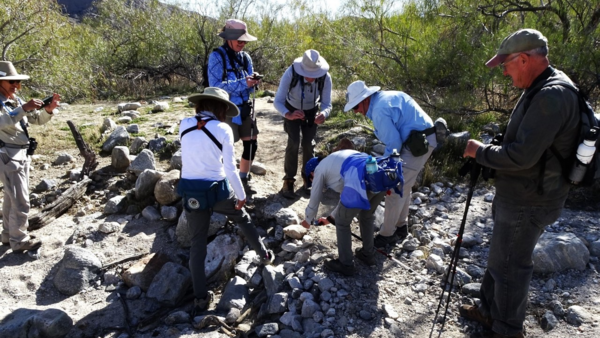On biophilia, an innate love of nature
“Somewhere, something incredible is waiting to be known.” — Carl Sagan
Under the rubric of natural history, that “something incredible” might include asking, “What is it?”, identifying if a species is new to science or perhaps just new to a particular location, to “How is it connected to the larger web of life?”, or “Will it survive our species’ alterations to the earth’s biosphere?”
The answers to each question fill in gaps of an enormous, arguably infinite puzzle, identifying among other things what is gained and conversely what is lost when natural areas are protected, or not, and what happens when we change our climate. What is both daunting and exciting is that there is no end to natural history questions for which the answers are still unknown.
Scientists have not always been willing to accept that reality. Starting back in the 1950s many universities worldwide began a shift toward a focus on molecular analyses, especially narrowing their inquiries to DNA and RNA molecules. The breakthroughs that ensued are truly groundbreaking, resulting in biomedical technologies aimed at improving human health and uncovering patterns of genetic diversity in people and in all life. Unfortunately, because of finite funding and space, those universities opted to increase resources for molecular research and at the same time reduce or eliminate new faculty hires whose research was aimed at understanding whole organisms, populations, and their relationships to a changing environment. The argument was that the catalogue of life on earth was and had been known for decades if not centuries, with the fruits of those earlier research efforts now collecting dust, and largely ignored in natural history museums around the world.
One of the loudest voices in that argument came from James Watson, who along with Francis Crick, and Rosalind Franklin, discovered the structure of the DNA molecule. Watson and Crick earned a Nobel Prize for their efforts, though both men failed to even acknowledge Franklin’s critical contributions in their acceptance speeches. Apparently, none of these three learned those critical playground skills of how to “play nicely.” Watson was hired to lead the Biology Department at Harvard University, where he transformed that department to be myopically focused on further bio-molecular studies. In doing so he marginalized another faculty member, E.O. Wilson. Temporarily marginalized, as Ed Wilson went on to come up with critically important innovations, ideas that change how we understand the patterns of life across our planet.
Wilson was then, or would soon become, the world’s expert on ants, and patterns of world-wide biodiversity. His focus was on whole organisms and he and his research therefore became a target for Watson’s disdain for anything but molecular-scaled research. Nevertheless, Wilson’s research led to his own set of groundbreaking discoveries, including factors that govern patterns of biodiversity across oceanic islands, with direct implications for what then happens when we fragment and isolate natural habitats into “islands” across mainland landscapes.
Wilson also explored questions about how and why species such as ants, some bees, and even some mammals (such as meerkats and mole rats) have become hyper social, to the extent that social castes are created that exist only to support successful reproduction of their “queens.”
His 1975 book, Sociobiology: A New Synthesis, advanced the premise that some behaviors are at least partially inherited and can be affected by natural selection. Another idea Wilson developed was that our species, humans, have an innate love of nature, which he termed “biophilia.” Unfortunately, that affection for nature and for being in nature, has been suppressed by lifestyles focused on surviving in an urban existence. How different that is from, say, indigenous people like the Cahuilla, whose language does not include a word for nature, because nature is for them not a separate thing, it is everywhere and everything.
I think of that biophilia every time I am out with our community scientists. I see on their faces and in their body language exactly what Ed Wilson meant by biophilia. Smiles spread across their faces, not like grins from hearing a clever joke, but smiles that reflect a person being where and doing what makes them feel good about who they are and where they are. Then there is the excitement that they emanate when we come across something new or unexpected, a patch-nosed snake, a tarantula, or a rare plant. It is an excitement that is contagious, spreading amongst all of us. It is an excitement born of learning something new, of discoveries that can lead to greater understandings of the complexities of nature and the importance to all of us that those complexities, what we collectively refer to as nature, remain intact.
Nullius in verba
Go outside, tip your hat to a chuckwalla (and a cactus), think like a mountain, and be safe.
